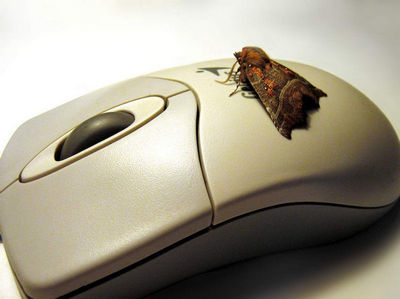History of echolocation studies in noctuid moths
It was Howard Hinton who first suggested the possibility that moths orientate themselves by means of echolocation (Hinton, 1955). The same idea was also discussed by Roeder and Treat (1957) along with the demonstration of the ability to emit short ultrasonic clicks at a certain fixed phase of a wingbeat in Prodenia eridania Since noctuid moths were known to possess the ears sensitive to ultrasound the idea of echolocation seemed to be reasonable, even though it was generally beleived that the main function of hearing in moths was to detect a hunting bat's cries.
Later the possibility of echolocation in moths was discussed by Kay (1969) and Agee (1971). It was also proposed by G. Gornostaev, a Russian enthomologist, that an echolocation rather than bat detection was a primary function of moth's ears (Gornostaev, 1984).
Nevertheless, at that time the experimental studies of echolocation in noctuid moths had not evolved. Probably a low interest to the problem was due to the lack of appropriate methods. The first experimental data related to the echolocation capability of the noctuid moths were only obtained 22 years later (Lapshin et al., 1993a,b)


